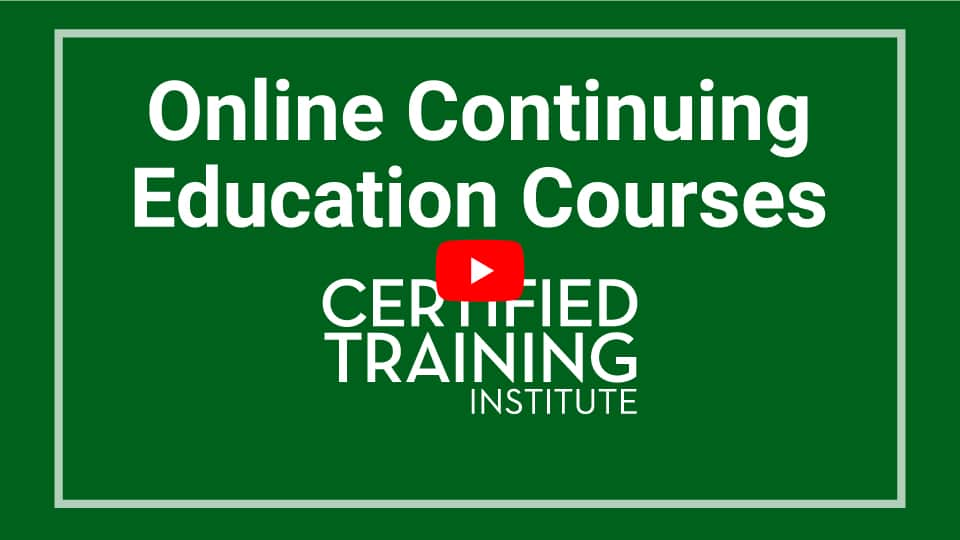Pesticide Applicator Continuing Education
Courses must be completed by 11:59pm EST 12/31, annually
Each course includes an official certificate of completion that you can save for your records. Looking for state reporting information? Learn more here.
Renewal Deadline:
Commercial and Technician licenses must be renewed 3 years from the date of issuance.
Private licenses must be renewed 5 years from the date of issuance.
CE Requirements:
Continuing education requirements differ by license type. See below for details.
» View New York Pesticide Applicator Continuing Education Requirements
1A - Agricultural Plant - 8 Credits
1B - Agricultural Animal - 6 Credits
1C - Companion Animal - 5 Credits
1D - Fumigation of Soil & Agricultural Commodities - 6 Credits
2 - Forest Pest Control - 6 Credits
3A - Ornamentals, Shad Trees, & Turf - 10 Credits
3B - Turf - 10 Credits
3C - Interior Plant Maintenance - 10 Credits
4 - Seed Treatment - 5 Credits
5A - Aquatic Vegetation Control - 8 Credits
5B - Aquatic Insect & Misc. Aquatic Organisms Control - 8 Credits
5C - Aquatic Fish Control - 8 Credits
5D - Aquatic Antifouling Paints - 5 Credits
5E - Sewer Line Root Control - 5 Credits
6A - Right-of-Way Vegetation Control - 8 Credits 6B - Right-of-Way in Place Pole Treatments - 8 Credits
7A - Structural & Rodent Control - 12 Credits
7C - Termite - 8 Credits
7B - Fumigation - 6 Credits
7D - Lumber & Wood Products - 6 Credits
7F - Food Processing - 12 Credits
7G - Cooling Towers, Pulp & Paper Process - 5 Credits
8 - Public Health Pest Control - 8 Credits
9 - Regulatory Pest Control - 5 Credits
10 - Demonstration & Research Pest Control - 5 Credits
11 - Aerial Pilot - 6 Credits
12 - Sales (of Restricted Use Pesticides) - 3 Credits
13 - Aquatic Antifouling Paint Applicator - 5 Credits
21 - Field & Forage - 10 Credits
22 - Fruit - 10 Credits
23 - Vegetable - 10 Credits
25 - Nursery, Ornamentals & Turf - 10 Credits
31 - Agricultural Animal Pest Control - 8 Credits
41 - Aquatic Pest Control - 8 Credits
Commercial Category 3A or 3B - Ornamental, Shade Trees & Turf Bundle
» View Package Content » Course Details
Application Equipment and Calibration
When pesticide applications become necessary for good turf management, it's important to understand how the application equipment works and how to properly calibrate the equipment. This course will provide turf managers with an understanding of the most common types of equipment used for pesticide applications on turf and how to properly calibrate the equipment.
Aquatic Pest Management
Aquatic ecosystems are extremely complex and fragile. This course covers the many aspects necessary for managing aquatic pests, from site evaluation and pest identification to pesticide application and treatment evaluation. Risk communication strategies are included, along with a variety of control methods in addition to aquatic pesticides.
Calibration Clinic - Pesticide Sprayers and Spreaders
Proper application of pesticides and fertilizers on turfgrass is only possible with accurately calibrated equipment. These lessons discuss the calibration of three types of application equipment: handheld or back-pack pump-up sprayers, large acreage sprayers, and fertilizer or “dry-granular” spreaders as well as several different calibration techniques.
Common Ornamental Plant Pests
Pest management of ornamental plants involves multiple steps from growing a healthy plant that is more resistant to pest damage to correctly identifying the problem when present. This course will cover the most common pests of ornamental plants.
Common Turfgrass Weeds
Managing weeds in a turf stand can be a tricky proposition. Often times the client fails to recognize that the presence of weeds in a turf stand is the result of poor turf, not the cause. This course will provide applicators with a working knowledge of weed biology, weed identification, and how herbicides work.
Controlling Aquatic Pests
This course outlines managing pests in New York aquatic environments. It provides extensive plant identification, such as common weed types and species. It also explains important information about other pests, various control methods, and equipment calibration.
Field Crop Pest Management
Pesticides protect plants and animals from insects, weeds, and diseases. This course outlines various invasive field crop pests and how applicators can successfully prevent these pests while protecting themselves and the environment from the adverse effects of pesticides.
Forest Pest Management
Learn about integrated pest management strategies for New York forests. Lesson content shows how to minimize pesticide’s impact on water sources, protect non-target organisms, and manage pesticide resistance. Other topics include weed control, sprayer operation and maintenance, various application methods, and more.
Forest Pests Pesticide Use
This course teaches pest control professionals techniques for safely managing pests found in New York forests. Lessons cover topics like forestry herbicide types, integrated pest management strategies, pesticide-mixing safety measures, and more.
IPM for Ornamental Plant Pest Management
IPM of ornamental plants involves multiple steps; producing a healthy plant, correctly identifying the problem, recognizing that there will always be some pests and damage, and only using pesticides as a last resort. This course teaches the basics of pest and disease management for ornamental plants, and the different tools and techniques needed to successfully provide your clients with a healthy and attractive landscape.
IPM for Termite Prevention
Termites are one of the most destructive pests in the United States. But there are several common-sense IPM practices that can be implemented to make a structure less inviting to termites from the start. This course will provide a review of IPM principles, termite biology, and several IPM practices to make any structure less attractive to termites.
IPM for Turf Management
As a turf manager, you'll need to be more than someone who just applies pesticides. Good turf management requires the use of all the tools in the toolbox. This course touches on the best practice cultural, mechanical, biological, and chemical controls for turf management.
IPM Practices for Landscape Pest Management
This Effective Pesticide Applications in Landscape and Turf Settings course discusses benefits and considerations for developing an integrated pest management (IPM) program in New York. Topics include a variety of pest-management methods, such as augmentation, mechanical and cultural control, sanitation, and pesticide use.
Ornamental Pesticide Application Equipment and Calibration
When pesticide applications become necessary for good ornamental plant management it's important to understand how application equipment works and how to properly calibrate the equipment. This course will discuss the most common types of equipment used for pesticide applications on ornamental plants, the way to calculate the volume of solution needed, and how to properly calculate the flow rate of the equipment.
Pest Control Practices in Residential, Industrial & Institutional Structures
This course equips you with safe, effective, and budget-friendly pest control methods that enable you to manage pests in New York that can cause property damage, injure people, or affect the quality of life. You'll learn to minimize risks to yourself, others, and the environment while controlling pests.
Pesticide Emergency Management and Environmental Protection
Learn best practices for public and environmental safety with this course on pesticide use. From notifying the public with warning signs to managing the cleanup of spills, this course prepares New York pest managers to safely handle hazardous pesticides.
Pollinator Stewardship
This course provides an outline of the primary concerns of the bee-keeping industry including colony collapse disorder (CCD), factors affecting honey bee decline, invasive insects, fungal disease, best practices for pollinator stewardship, and minimizing pesticide risks for pollinators.
Respiratory Protection
Knowing how to use a respirator safely in New York is essential, especially when required by a pesticide label. This course outlines the types of respirators available, how to ensure proper fit, and inspection/maintenance requirements.
Review of Forest Pest Management
Take this course to learn how to protect yourself and the environment while you manage New York forest pests. This course includes information on the personal protective equipment (PPE) that your employer must make available to you and important techniques for broadcast sprayers, application methods and banding calibration.
Review of Pesticide Use Hazards
This course teaches New York pest managers about the hazards associated with pesticides. Pesticides are categorized by their intended use and the toxicity danger they present to non-target species, humans, pets, plant life and more.
Right-of-Way: Pest Management Overview
Pest management in right-of-way situations can be a challenge. The economic thresholds are different in right-of-way situations compared to either a landscape setting or an agricultural setting. This course provides an overview of pests common to rights-of-way, management solutions, a look at the equipment commonly used to treat rights-of-way, and a review of calibration steps for that equipment.
Turfgrass Disease, Insect, and Vertebrate Pests
There are a variety of diseases, disorders, insects, and vertebrate pests that can cause problems in turfgrass. This course will give applicators and turf managers an overview of these common pests and strategies for their management.
Vegetable Crop Pest Management
This course describes various invasive pests of vegetable crops and how an applicator can effectively treat infestations while protecting themselves and maintaining productive crop yields.
Wood Destroying Pest Management
Termites are just one of the many wood-destroying pests found throughout the United States. Carpenter ants, powderpost beetles, and wood-damaging fungi can also cause severe structural damage if not properly managed. This course will cover the primary wood-destroying pests found through the country, the recommended treatments for each of those pests, and the primary sources of excess structural moisture.

